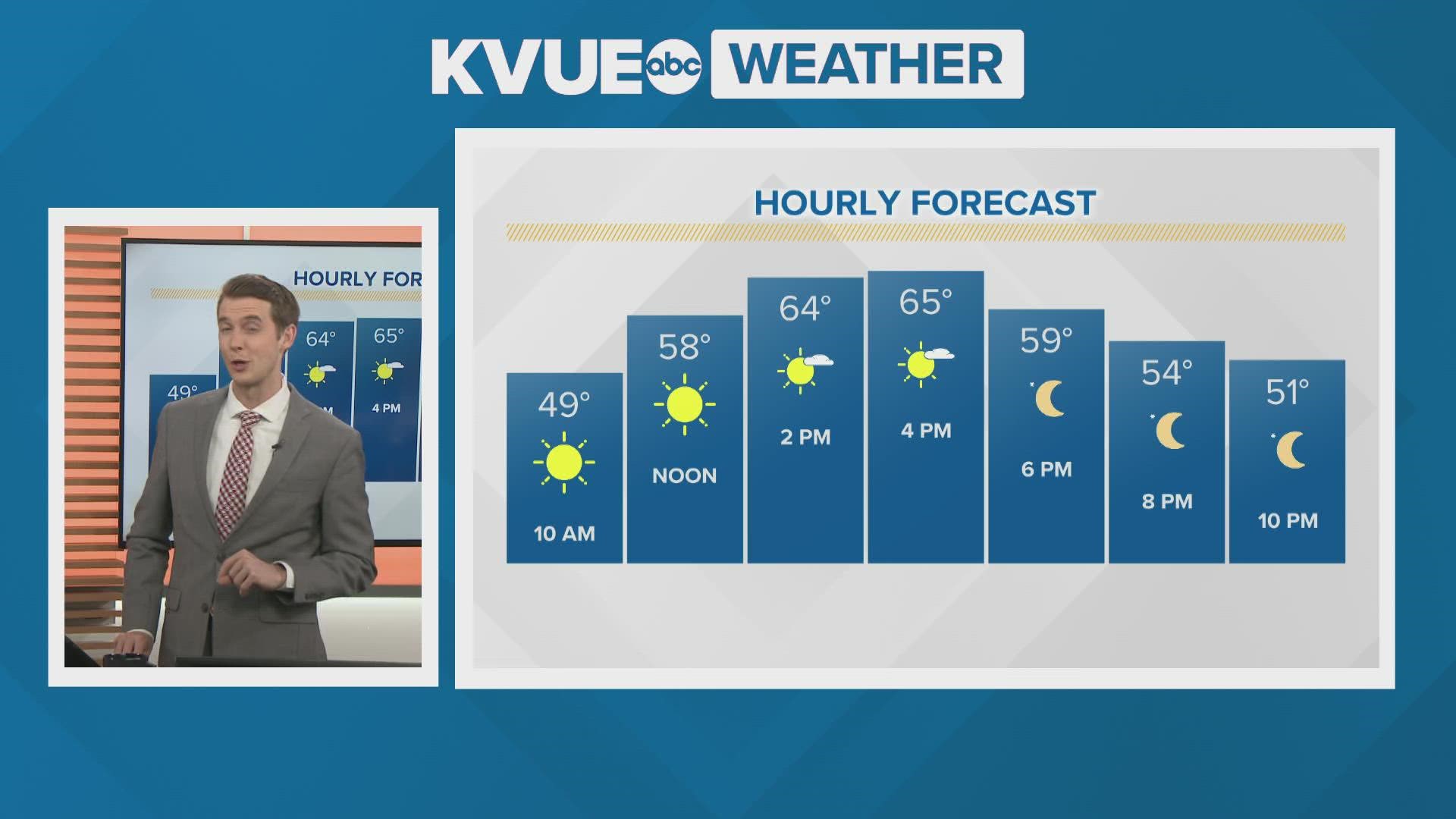AUSTIN, Texas — Dec. 21 is the first day of astronomical winter and, after last winter, Central Texans are wondering what this one will bring to the area.
La Niña conditions have developed in the Pacific and are expected to continue through the winter. The La Niña conditions caused a warm November and a warm start to December. La Niña will continue being a big influencer on the weather in Central Texas throughout the winter months.
It's true, La Niña typically leads to a warmer and drier winter in Central Texas. But, after last winter, Central Texans have voiced concerns about seeing a repeat of the February 2021 deep freeze that slammed the Lone Star State.
La Niña winters in Central Texas
La Niña winters can be a mixed bag in our part of the state but, historically, most La Niña winters tend to bring above-average temperatures and below-average precipitation. But this is not always the case.
Last winter (2020-21) is a good example of a La Niña winter bringing a period of extreme cold and wintry weather to the area. Another frigid winter was the winter of 1964-65.
However, these two winters are considered the exceptions and not the rule when it comes to La Niña winters in Texas. Taking a deep dive into the numbers, Central Texas on average is favored to see warm and dry weather during a La Niña. Here's a look at the average winter temperatures and precipitation compared to the La Niña winter averages:
Winter average temperatures & precipitation
Average temperature: 52.6 degrees
Average precipitation: 6.38 inches
*These values are derived from the 1951-2020 normals and come from KATT (Camp Mabry/Robert Mueller airport station)
Winter La Niña average temperatures & precipitation
Average temperature: 53.6 degrees
Average precipitation: 5.20 inches
*These values are derived from the 23 recorded La Niña winters dating back to 1949-1950 and come from KATT (Camp Mabry/Robert Mueller airport station)
Of the 23 recorded La Niña winters dating back to the winter of 1949-50, 16 winters featured above-average temperatures and 16 featured below-average precipitation in Central Texas. Comparing the average winter temperatures and precipitation to La Niña winters, temperatures are one degree warmer with precipitation more than one inch less on average during La Niña winters.
La Niña explained and why it impacts winter weather
A La Niña is classified when cold waters dominate the equatorial Pacific off the western coast of South America, reaching a certain threshold. The cold waters occur when trade winds are stronger than average in this particular region of the equatorial Pacific. The stronger trade winds help push the normally warmer ocean surface waters toward Asia allowing colder ocean surface waters to move into their place.
These colder waters have a significant impact on global weather, especially during the winter season across the Northern Hemisphere, including right here in Central Texas. In the case of La Niña, the colder waters help drive the jet stream farther north.
The northern push of the jet stream leads to generally warmer temperatures in Central Texas with fewer storm systems moving into the area. This generally creates warmer temperatures and less precipitation.

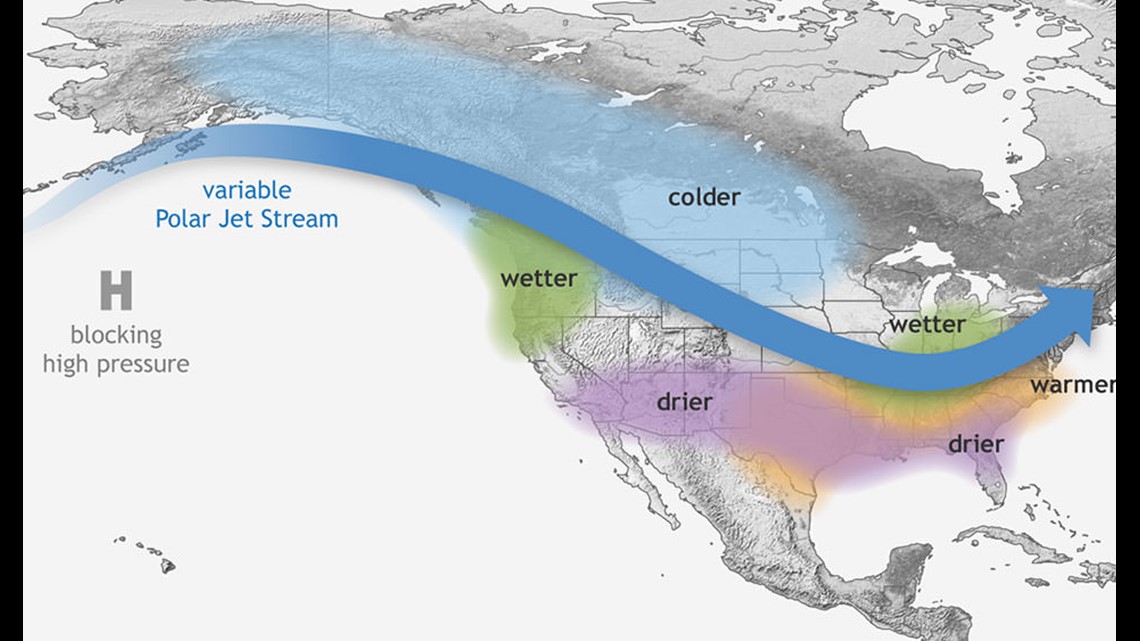
NOAA's 2021-2022 Winter Outlook
The National Oceanic and Atmospheric Administration (NOAA) has released a winter outlook for the U.S. This outlook takes many variables and atmospheric processes into consideration but is heavily influenced by La Niña. The latest outlooks shows Central Texas will see warmer and drier conditions this winter than average.
Temperature outlook
The NOAA temperature outlook for December through February is calling for above-average temperatures this winter in Central Texas and across the entire Lone Star State. Our area is in the heart of the highest probability of these warmer temperatures.

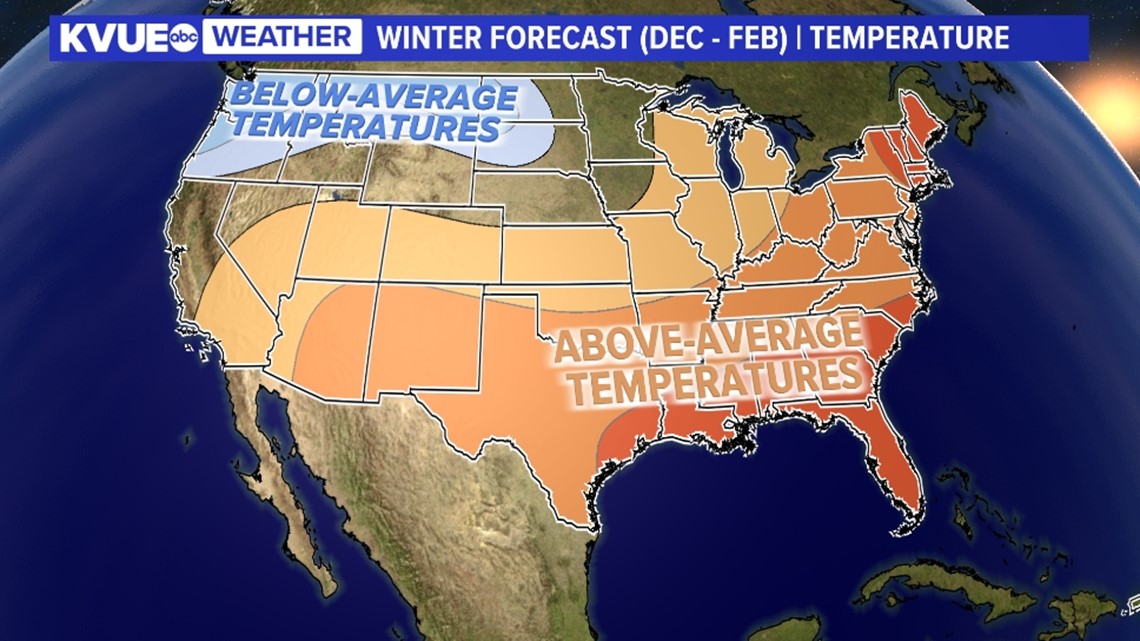

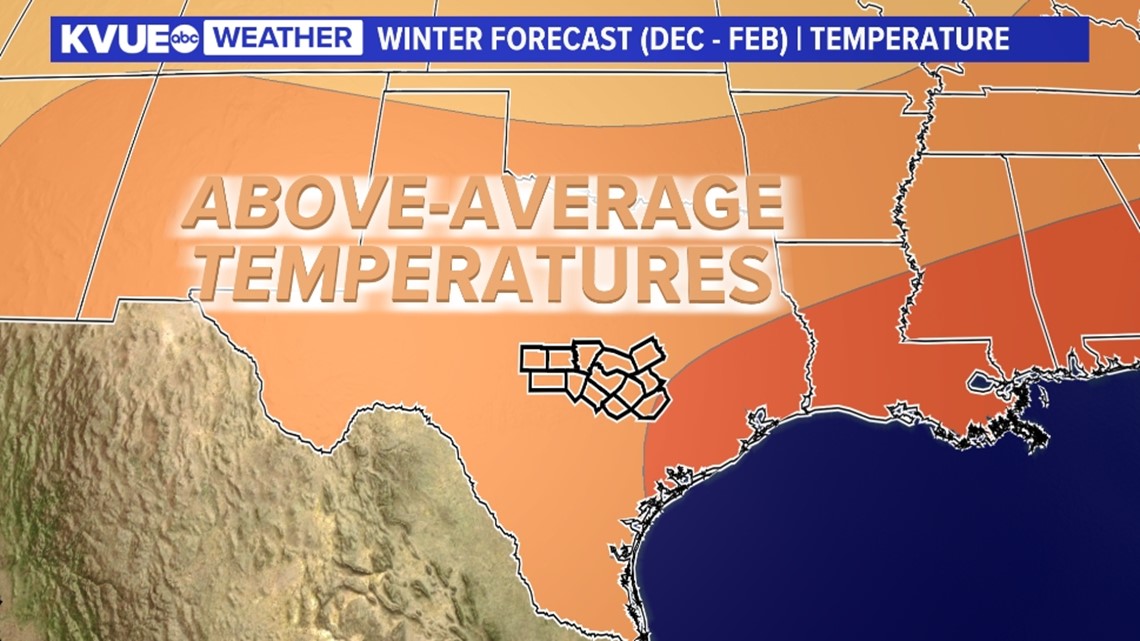
Precipitation outlook
The NOAA precipitation outlook is calling for below-average precipitation this winter in Central Texas and across most of the Lone Star State. The Hill Country has the highest probability of below-average precipitation.

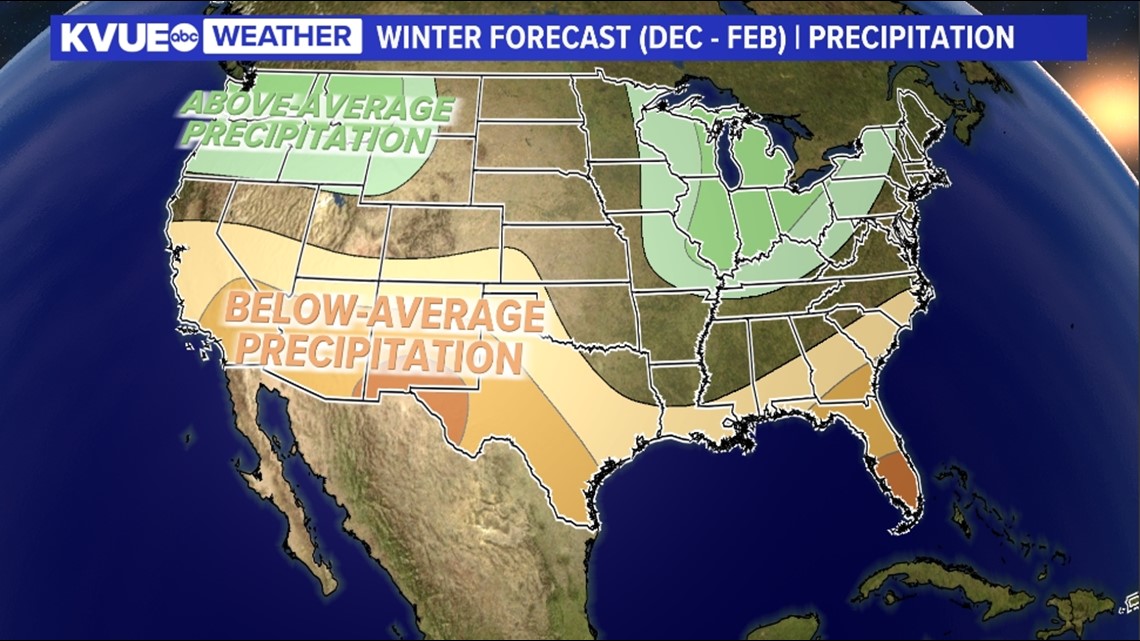


Be prepared for the unexpected
While NOAA's forecast calls for a milder winter, and La Niña winters historically favor above-average temperatures in Central Texas, this does not mean the area is immune to cold snaps and freezes, including wintery precipitation. There is always variability during La Niña winters.
While the temperatures on average may skew warmer than average during the duration of this winter, periods of below-average temperatures can and most likely will occur. In fact, some of the most impactful winter weather events in Central Texas have occurred during La Niña winters. This includes 2021, 2017 and 1985, during which wintery weather wreaked havoc across parts of the area.
Regardless of the warmer-than-average winter expected this season, it is best to be prepared. It only takes one winter storm to cause significant impacts!
A special courtesy to Keith White from the Austin/San Antonio National Weather Service. Keith is a meteorologist, and a climate and social media team lead for the local NWS office. He assisted with key stats and information for this La Niña discussion. Here's a good resource for more climate information on Central Texas.
PEOPLE ARE ALSO READING:

